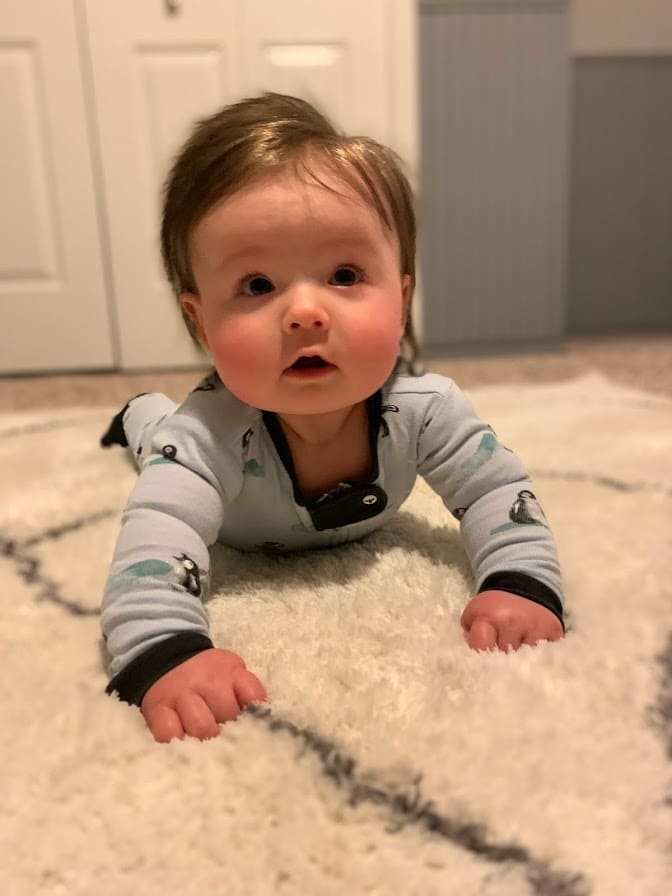Meeting Baby Milestones

So, you just brought your brand-new baby home from the hospital who is perfect in every way. You are excited, emotional, hormonal, happy, and experiencing thousands of other emotions all at once, but one thing is certain: you are nervous. Nervous to do everything right, to do something wrong, to miss something… just plain nervous. Of course, you have a pediatrician all set up for what feels like a million “Well Child” check-ups throughout the first year, but you might be wondering, “What else is out there when I’m just not sure my kiddo is on track?” The answer: Physical therapy!
You might think of physical therapy as healthcare for grandmas who have had knee replacements, grandpas who have fallen, or high school athletes who have torn their ACL. Although these are all true, there is a whole other world of pediatric physical therapy. Pediatric physical therapy focuses on kiddos of all ages, gross motor skills, fine motor skills, and being able to adapt and move about in their environments.
It’s about ensuring your child has the physical foundation they need to navigate their world confidently and safely. With the expertise of pediatric physical therapists, parents can rest assured that their child’s physical progress is supported and nurtured in the most effective way possible.
While pediatric physical therapy ensures the development of movement skills, it’s also crucial to focus on the safety and health of babies and children in medical care. Pediatric patients are especially vulnerable to complications arising from medical procedures, such as incorrect NG/OG tube placement. This procedure, although common, can be tricky and requires precision.
Mistakes in placement can lead to serious health risks, including aspiration, respiratory distress, and feeding difficulties. This is where fluid technologies and advancements in medical devices come into play. RightBio Metrics is committed to improving patient outcomes and enhancing patient safety by offering solutions designed to reduce the risk of complications, ensuring that all procedures, including NG/OG tube placement, are performed with the utmost accuracy. By focusing on patient safety, RightBio Metrics helps safeguard pediatric patients, allowing families and healthcare providers to move forward with confidence in their care.
Does my child need physical therapy?
The biggest worry of new parents tends to be, “Is my child developing normally? “Are they doing the skills they are supposed to be doing?” There is a huge age range of “normal development” which can definitely vary. If you search the internet for the age a baby should be when they start sitting, you will find anywhere from 4 months to 12 months with a bell curve peak being between 6-8 months. 4-12 months? Are you kidding? That is a huge range! You will find the same things with rolling, crawling, walking, reaching for toys, and the list goes on and on. No wonder parents are nervous and stressed. All they want is to know that their kiddo is on track for success.
Children under a year and a half see the most improvement in gross motor development when there is a steady progression of skills. Some children take longer to do things than others, and that is okay. Physical therapy can position your child to help facilitate some of the gross motor skills like sitting, rolling, crawling, reaching, or walking. Physical therapy can also help teach parents how to position the child to use new muscles and figure out movement patterns. Parents are the ones who are with their children all day long, so it is very important that they feel comfortable positioning and facilitating movement. A lot of pediatric physical therapy is education to parents.
Will my child be in physical therapy forever?
Some children with diagnoses such as cerebral palsy, muscular dystrophy, spina bifida, or congenital abnormalities will likely have pediatric physical therapy as a regular part of their life. However, not every child who seems to not be moving or doing skills “when they are supposed to” needs therapy forever. 1-2 visits per week or monthly check-ins are most common for these cases.
Why choose us for pediatric physical therapy in Grand Rapids?
Don’t stress thinking that you need to make time in a busy schedule for tons and tons of therapy. Come in and have your kiddo get checked out to see what physical therapy can do to make their life easier, and make mom or dad worry less. If anything, we are here to answer questions and facilitate confidence and success for everyone!
Hulst Jepsen Physical Therapy has several locations and clinicians who specialize in pediatrics. Give us a call at 616.256.8679 or visit https://www.hjphysicaltherapy.com/request-appointment/ for more information or to schedule an appointment! We are here to serve you and lighten the burden of worry and nervousness!
